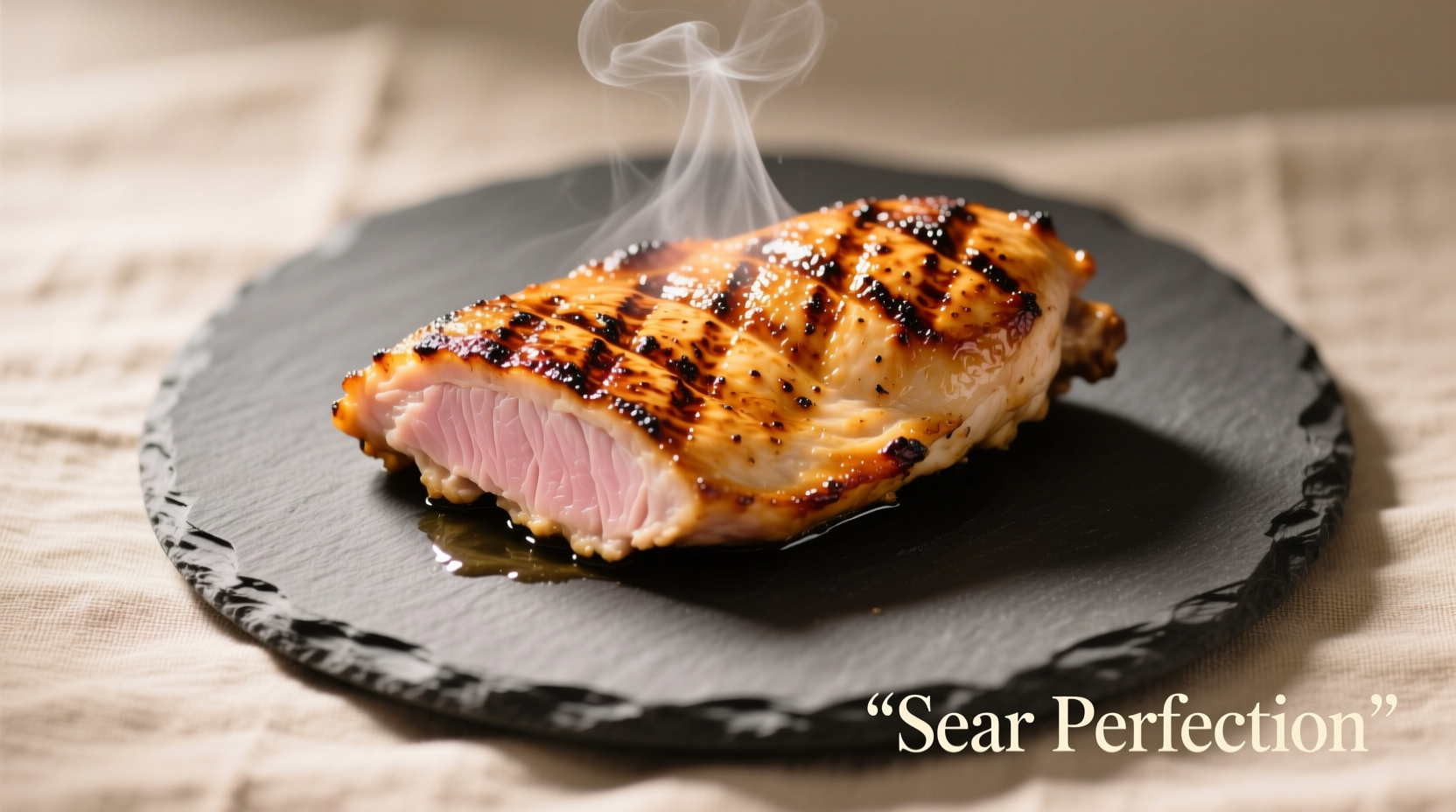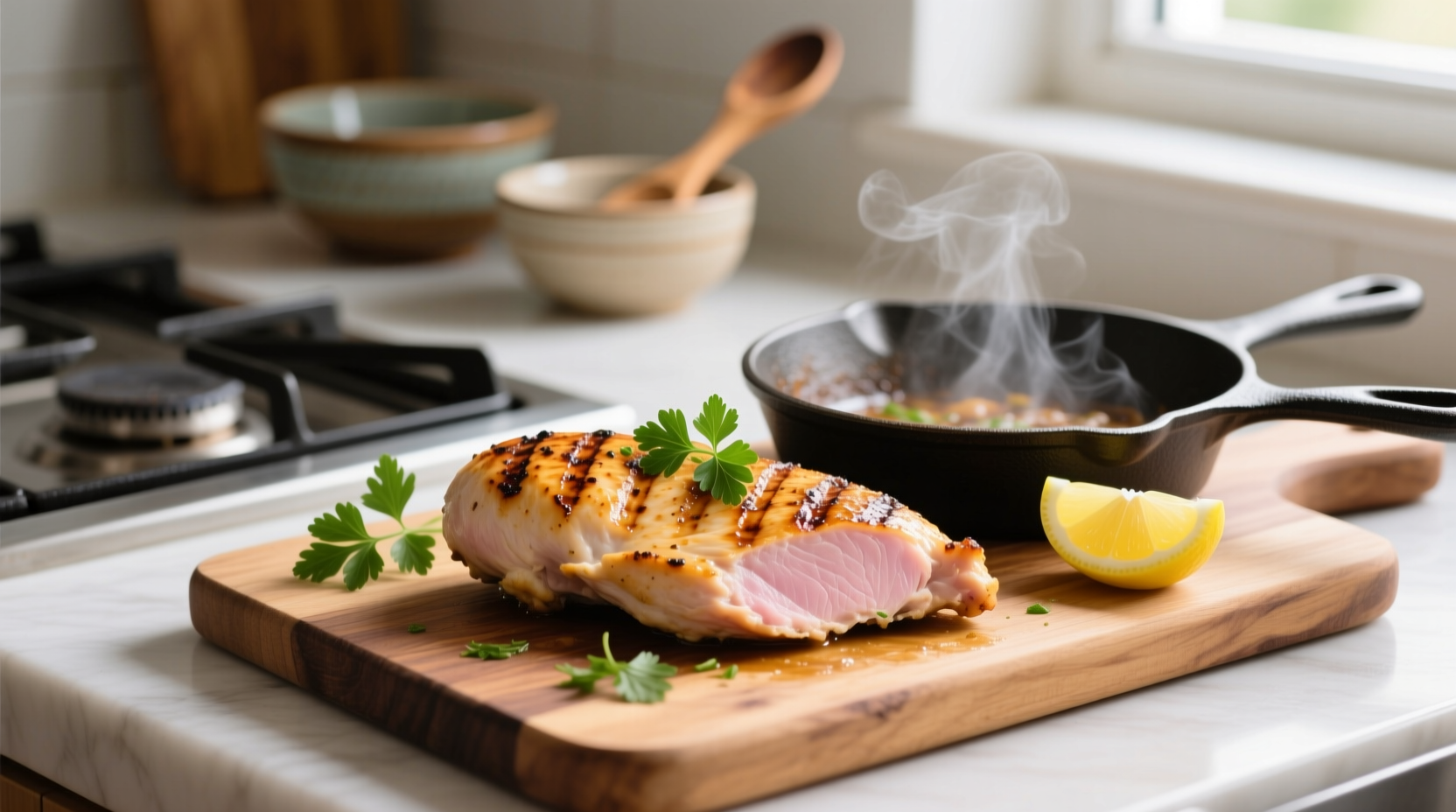Achieve perfectly cooked, juicy chicken breast every time by searing 6-8 minutes per side in a hot skillet until reaching 165°F internal temperature. Proper preparation, temperature control, and resting time are essential for avoiding dry, tough results.
The Stovetop Chicken Breast Master Guide
Cooking chicken breast on the stove seems simple, but getting consistently juicy, flavorful results requires understanding key techniques. Many home cooks struggle with dry, unevenly cooked chicken, but with the right approach, you can transform this lean protein into a restaurant-quality meal in under 20 minutes.Why Your Chicken Breast Keeps Drying Out (And How to Fix It)
Chicken breast's low fat content makes it prone to drying when exposed to high heat. The American Institute for Cancer Research confirms that overcooking by just 5 minutes can reduce moisture content by 40%. Professional chefs solve this through precise temperature management and proper resting techniques that allow juices to redistribute.Essential Preparation Steps for Success
1. Select Quality Chicken Choose evenly sized breasts (6-8 oz each) with consistent thickness. If one side is significantly thicker, butterfly it by slicing horizontally through the center. 2. Dry Brine for Maximum Juiciness Season with salt (1/2 tsp per breast) and refrigerate uncovered for 1-4 hours. This process enhances moisture retention through protein modification, as documented by the USDA's Food Safety and Inspection Service. 3. Bring to Room Temperature Remove chicken from refrigerator 20 minutes before cooking. Cold meat creates temperature inconsistencies that lead to uneven cooking.Step-by-Step Stovetop Cooking Process
Equipment Needed: Heavy skillet (cast iron or stainless steel), instant-read thermometer, tongs 1. Heat Control is Critical Preheat skillet over medium-high heat for 3-4 minutes until a drop of water sizzles immediately. Too hot = burnt exterior, raw interior. Too cool = steamed, gray chicken. 2. Oil Selection Matters Use high smoke point oil (avocado, canola, or light olive oil) - about 1 teaspoon per breast. Butter burns too quickly at required temperatures. 3. The Perfect Sear Place chicken in hot skillet away from you to prevent oil splatter. Press gently with spatula for 10 seconds to ensure full contact. Do not move for 4-5 minutes until golden brown crust forms. 4. Flip and Finish Cooking Flip once using tongs. Reduce heat to medium. Cook 5-7 minutes more until internal temperature reaches 162°F. The residual heat will bring it to the USDA-recommended 165°F.
Temperature Guide: The Only Reliable Doneness Indicator
| Internal Temperature | Visual Indicator | Texture | Food Safety Status |
|---|---|---|---|
| 145°F (63°C) | Pink center | Very juicy | Safe after 8.5 minutes hold |
| 150°F (66°C) | Slight pink | Juicy | Safe after 2.8 minutes hold |
| 160°F (71°C) | No pink | Moist | Immediately safe |
| 165°F (74°C) | White throughout | Acceptable moisture | Immediately safe (USDA standard) |
Avoid These 3 Common Mistakes
1. Moving Chicken Too Soon Resist the urge to peek or move chicken during initial searing. The crust needs uninterrupted contact to form properly. 2. Skipping the Rest Period Rest cooked chicken breast on a cutting board for 5-7 minutes before slicing. This allows juices to redistribute throughout the meat. 3. Guessing Doneness Visual cues alone are unreliable. An instant-read thermometer is the only accurate method to determine proper doneness.Flavor Variations to Elevate Your Chicken
Simple Pan Sauce After removing chicken, deglaze skillet with 1/4 cup chicken broth, scraping up browned bits. Add 2 tbsp butter and fresh herbs for an instant sauce. Herb-Infused Oil Add fresh thyme, rosemary, or sage to the oil during preheating for aromatic flavor infusion. Citrus Finish Squeeze fresh lemon or lime juice over chicken during the last minute of cooking for bright acidity.When Stovetop Isn't the Best Method
While stovetop works well for most applications, certain situations call for alternative approaches:- Very thick chicken breasts (over 1.5 inches): Consider searing then finishing in 375°F oven
- Meal prep for the week: Poaching or baking multiple breasts is more efficient
- Delicate flavor profiles: Sous vide provides precise temperature control for specialty dishes
Pro Tips from Professional Kitchens
Restaurant chefs use these techniques to guarantee perfect results:- Place a metal lid or smaller skillet on top of chicken to ensure even contact with the pan
- Add a teaspoon of butter during the final minute of cooking for enhanced flavor and sheen
- Slice against the grain at a 45-degree angle for maximum tenderness











 浙公网安备
33010002000092号
浙公网安备
33010002000092号 浙B2-20120091-4
浙B2-20120091-4